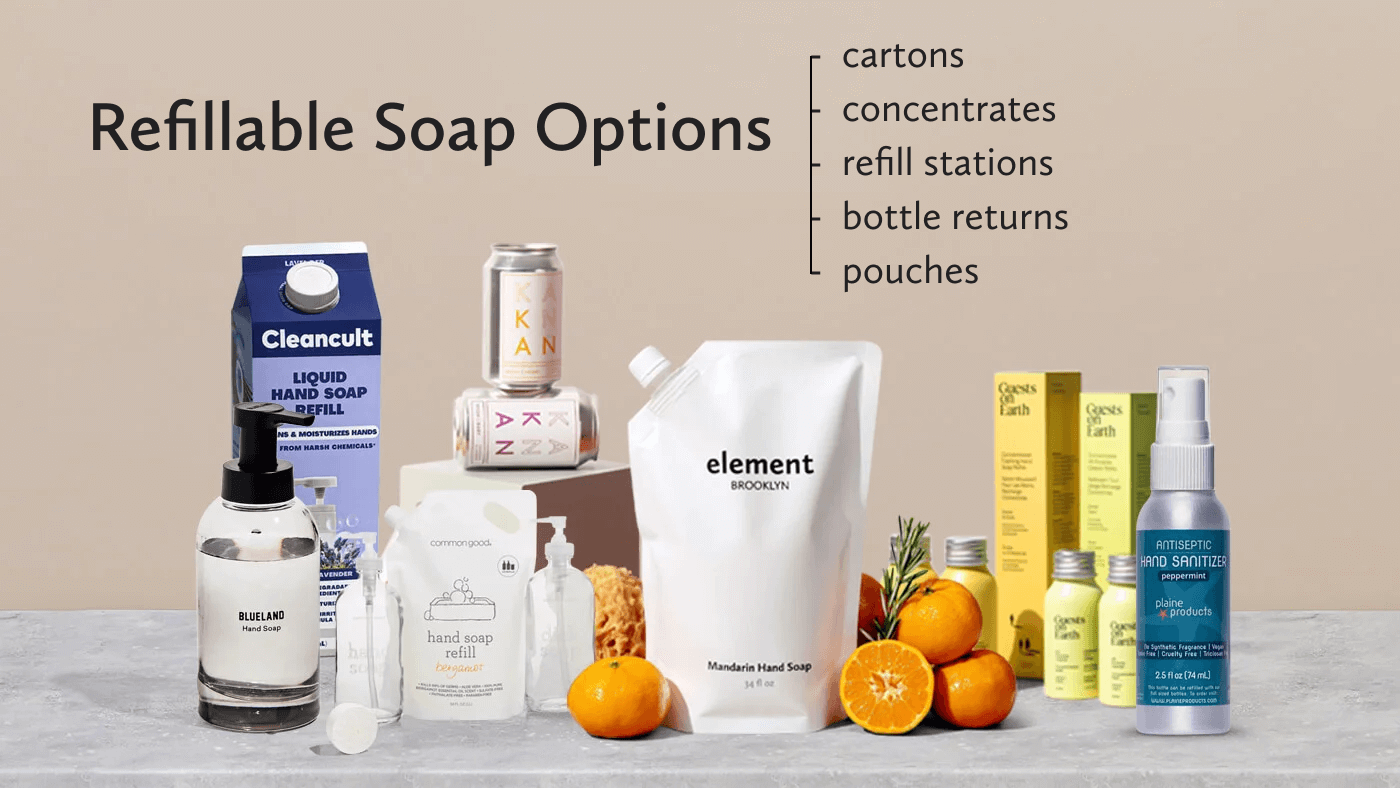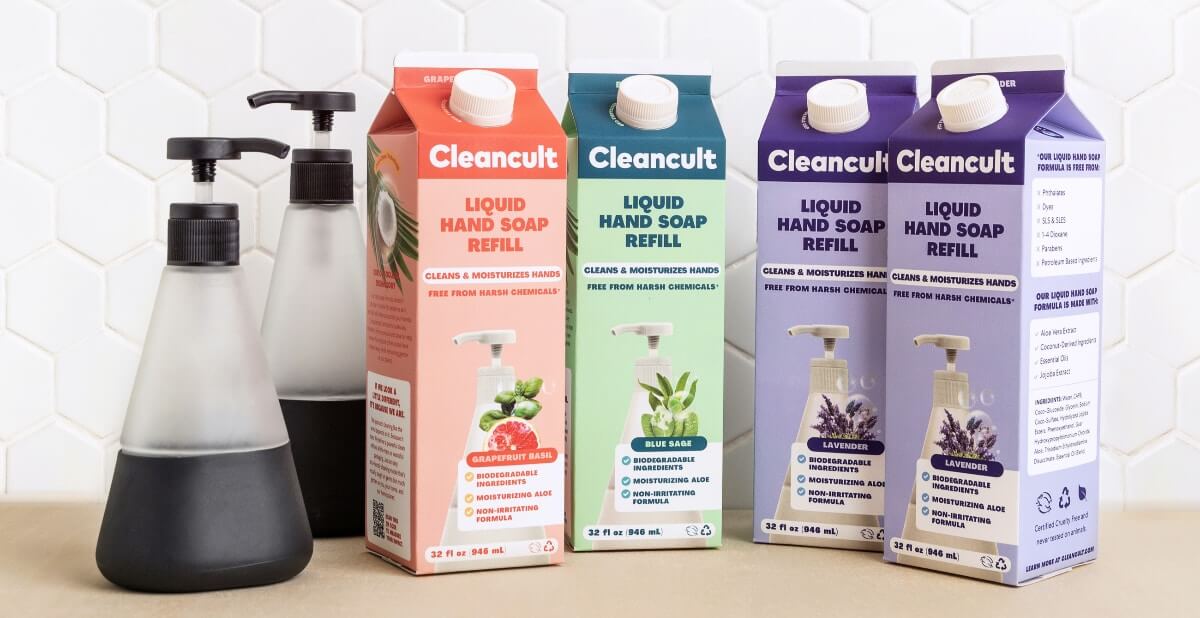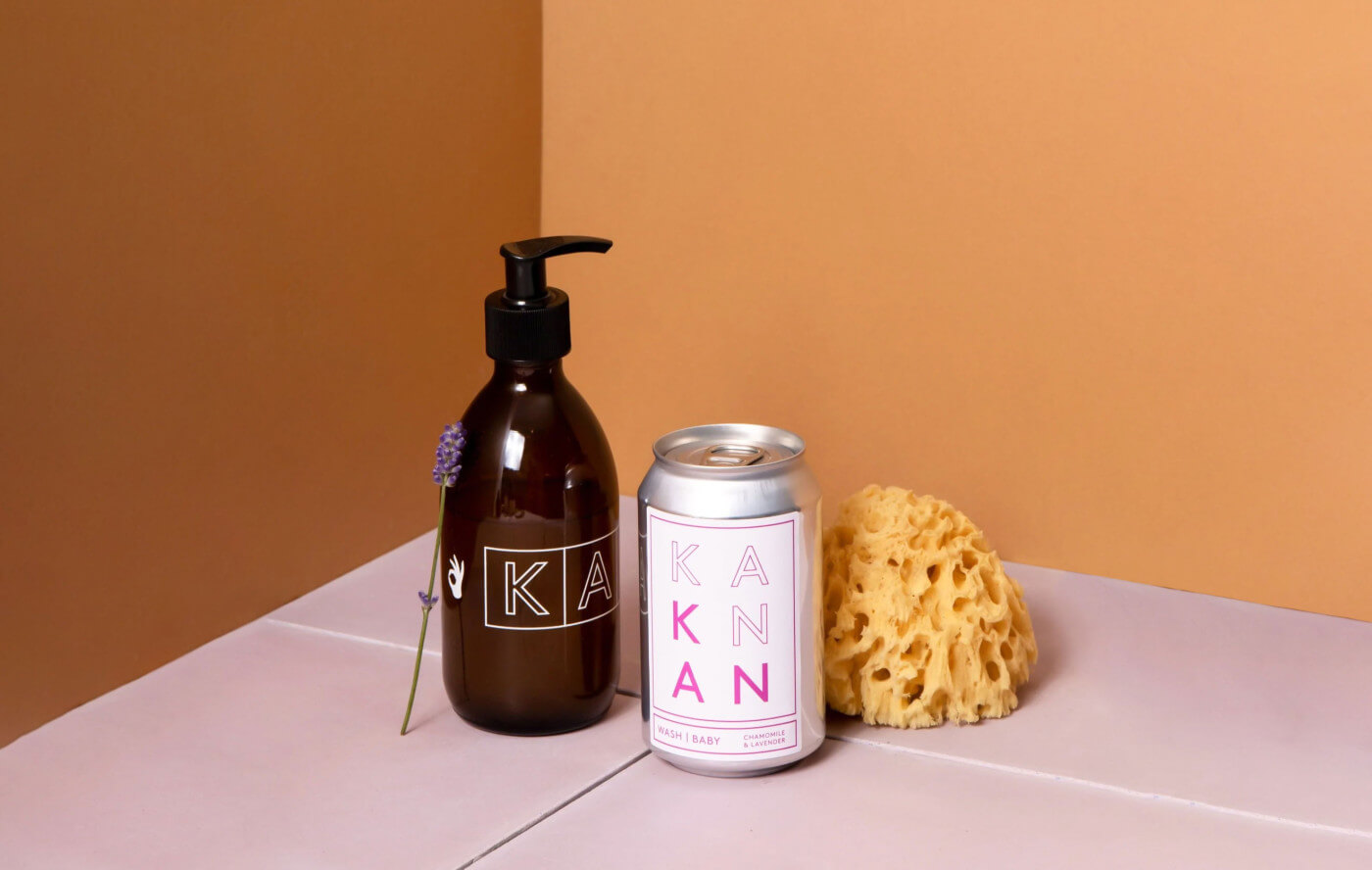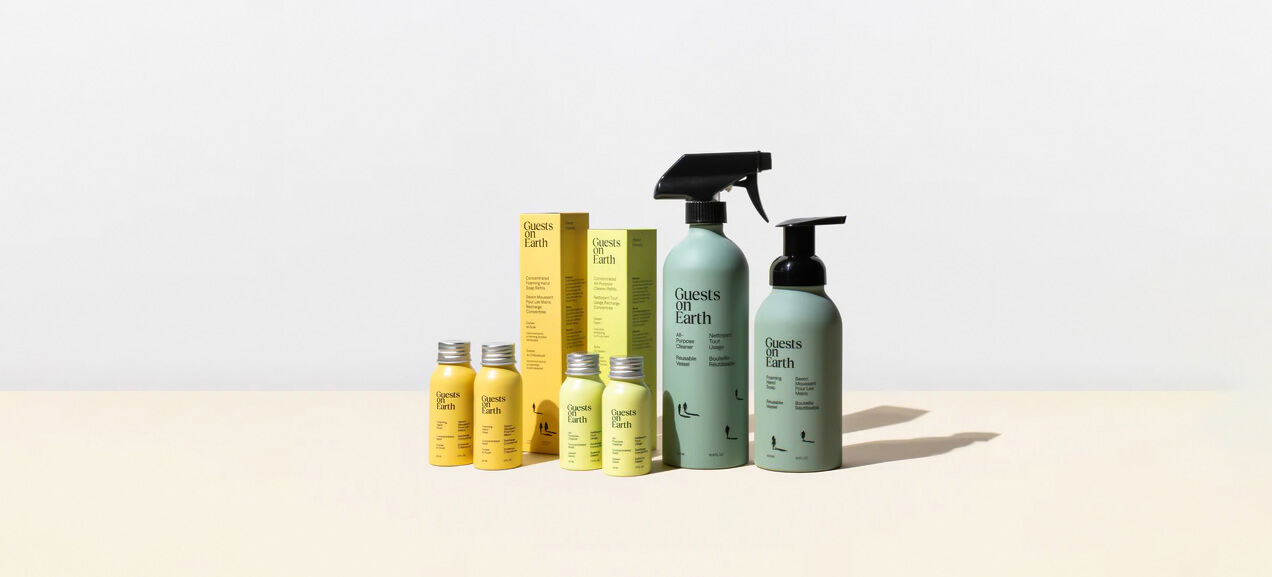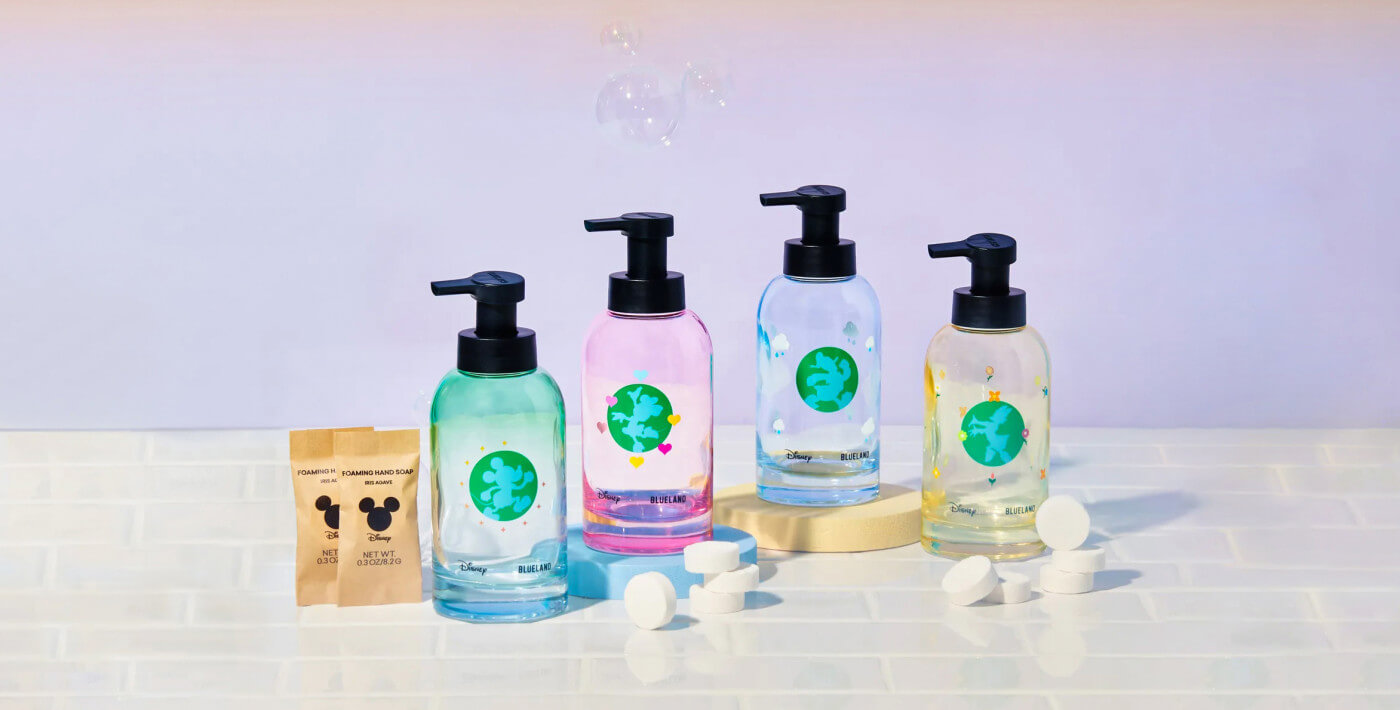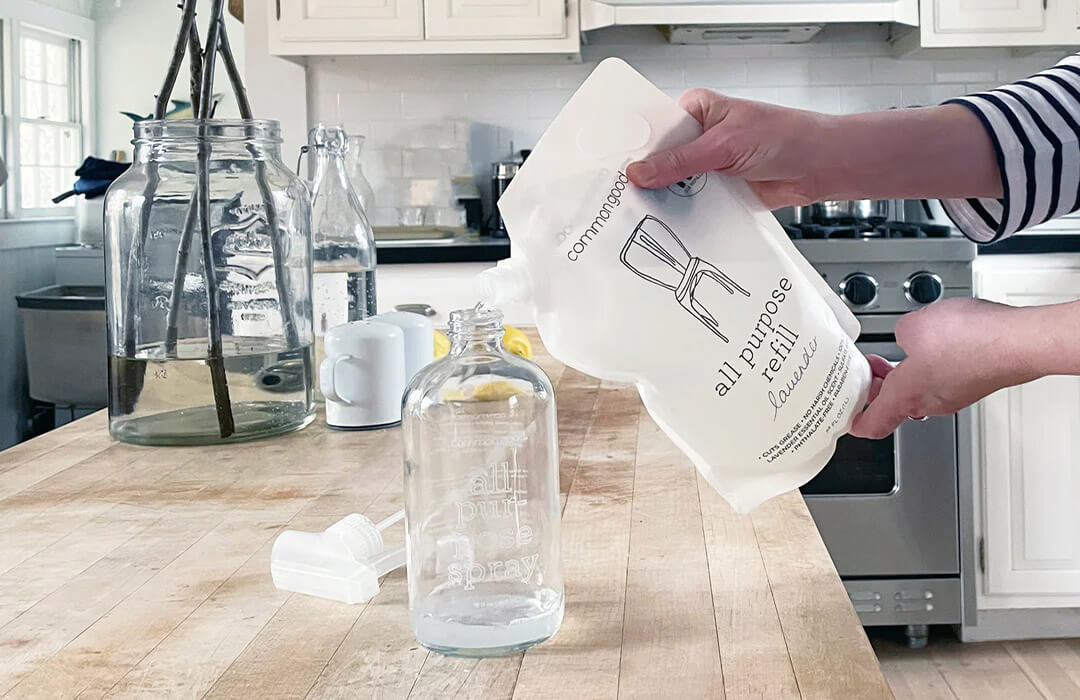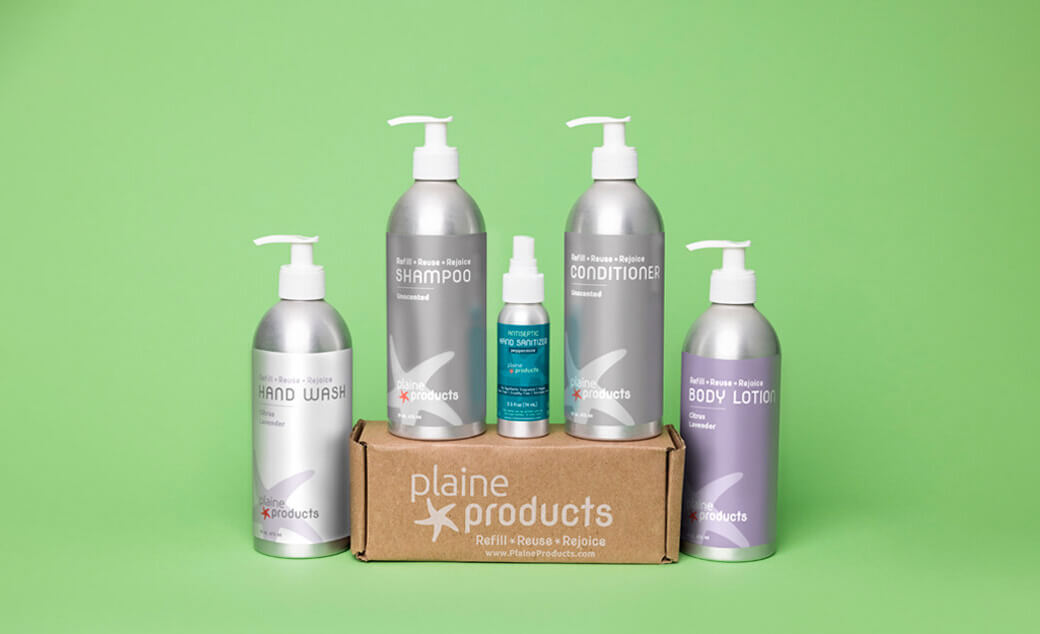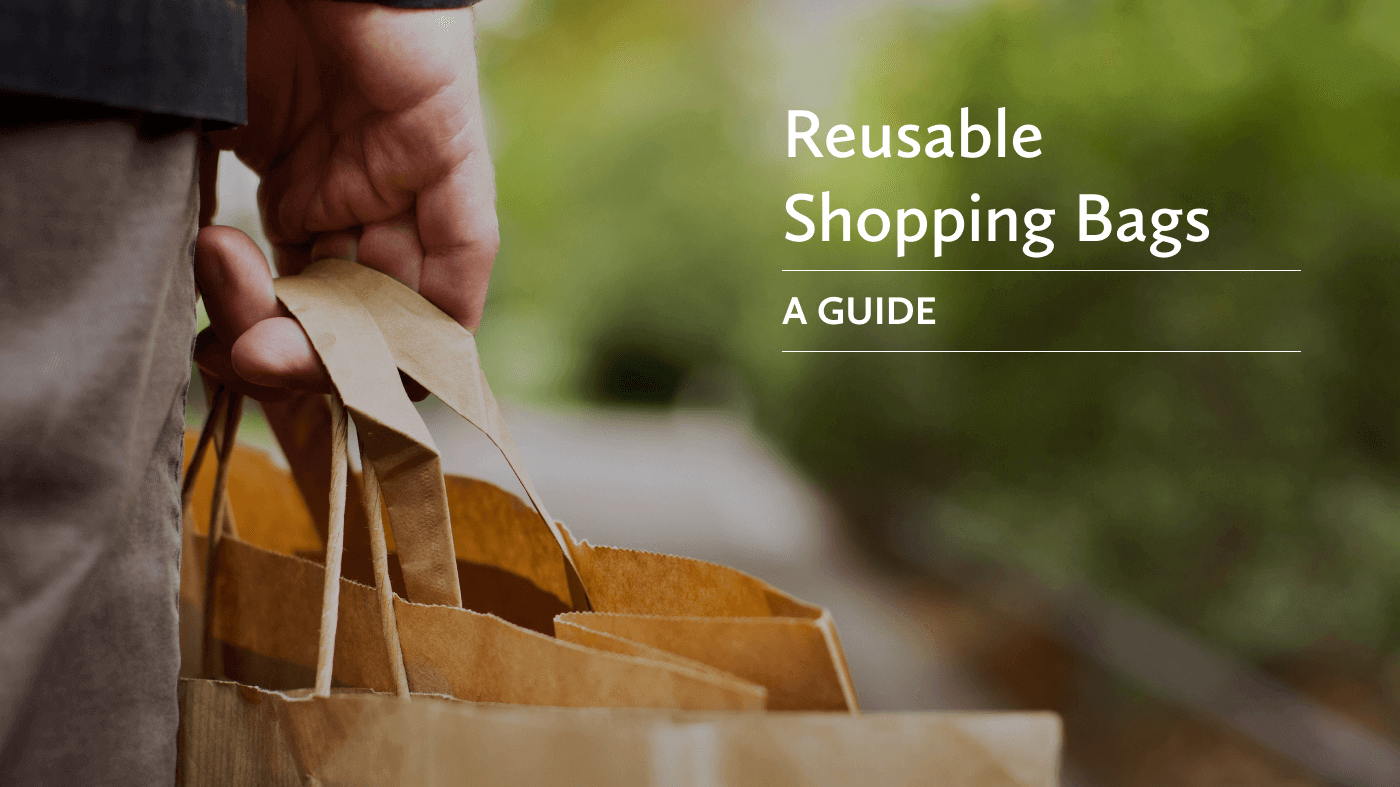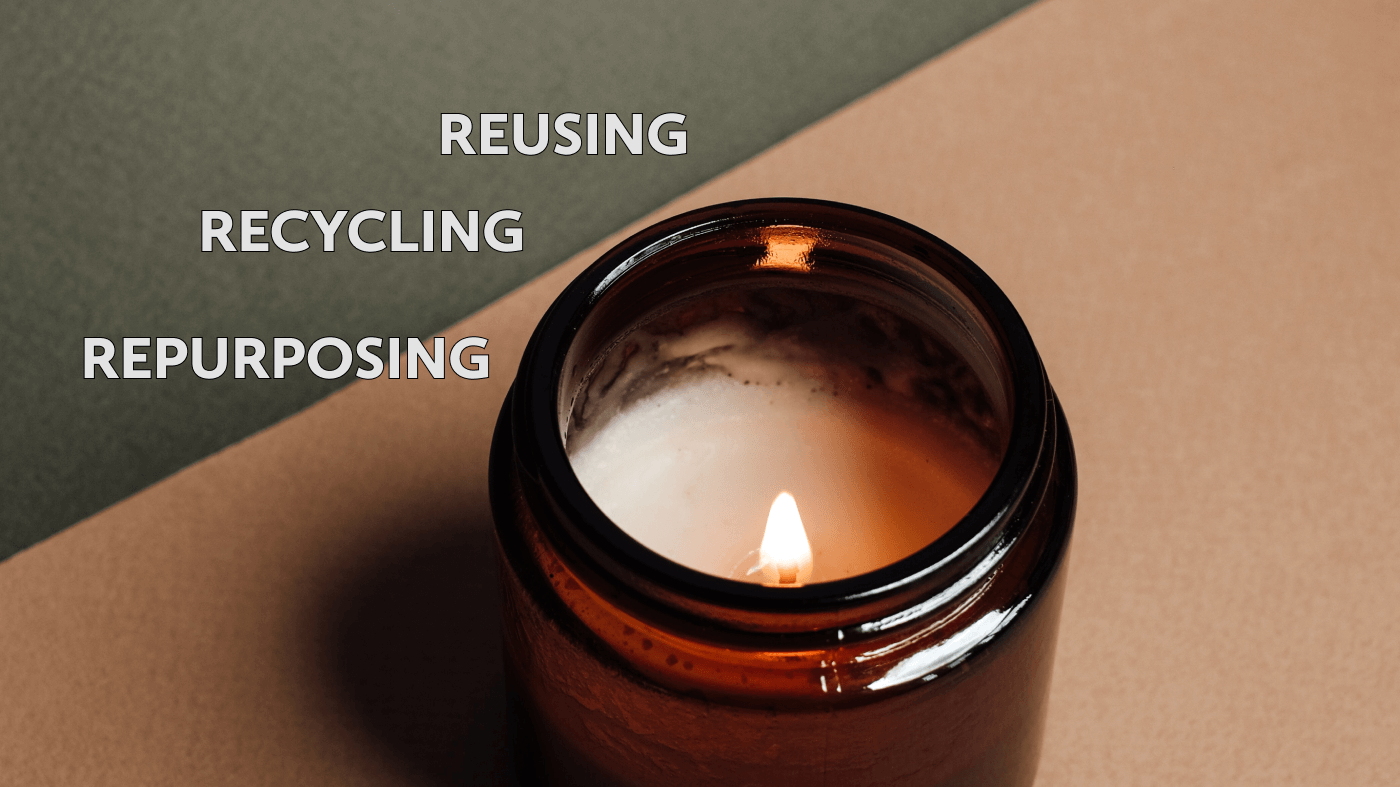With the rise of the circular economy, the concept of refilling and reusing existing products instead of replacing them is catching on. As more efforts are made to move away from manufacturing unnecessary plastics, many consumers are looking to refillable hand soaps as a logical step forward.
As a result, there’s a growing number of hand soap refill options on the market — ranging from tablets and concentrates to pouches and pods. This is great news if you’re considering switching from a standard plastic hand soap bottle, but how do they all differ from one another and what are the benefits (and drawbacks) of each type?
Let’s take a closer look at some of the main types of refillable soaps and dispensers, including:
• Cartons
• Cans
• Pouches
Soap carton refills
Cleancult is the best-known company offering cardboard carton soap options. Photo: Cleancult
The concept behind carton refills is that they reduce plastic by utilizing paper-based containers with easy pour spouts (think orange juice or half-and-half cartons). The most well-known company pioneering this trend is Cleancult, which offers the refills in two options: foaming hand soap or liquid hand soap that both use naturally derived products. These offer a super simple refill setup: just pour the liquid into the glass dispensers.
Before signing up for a soap refill subscription (available at discounted rates), it may take a little time to land on a fragrance you prefer, and a sample kit with multiple scents and dispensing bottles can be a bit costly.
Can refills
KANKAN puts all-natural, vegan, cruelty-free soap in cans. Photo: KANKAN
You might be surprised to see aluminum cans as a soap refill option, but it’s a viable alternative to plastic soap bottles. After all, aluminum is a well-established material that’s infinitely recyclable and readily accepted through municipal curbside programs. A handful of companies are offering this trending refill option, including the U.K.-based, KANKAN, which sells canned refill bundles of vegan hand soaps for your existing dispenser (or bottle dispensers can be purchased in starter kits).
In the United States, the California-based startup, Trades for Good, takes a slightly different approach by developing a soap-dispensing pump that fits directly into the soap can refills. This follows more of a replace-and-recycle model than one that reuses existing materials, but the canned dispensers are extremely easy to use, and offer a sleek, modern look.
Concentrates
Trades For Good points out in its marketing material that plastic bottles are rarely recycled.
Another type of refillable soaps are concentrates, which are strong soaps that must be diluted before use and can make larger soap quantities. Since much of the liquid hand soap we use consists of water, concentrates pack a lot of punch by removing excess water and have the advantage of using smaller packaging.
These types carry a higher price tag upfront, but in the long run are a cost-saving alternative to traditional plastic hand soap dispensers — particularly if you sign up for a subscription package that includes discounted rates and automatic deliveries. Some concentrates require a little more effort from the consumer to measure and mix the formula, while others are a simple, one-step process.
There are several types of concentrates within this category including vials, bars, pods, and tablets:
Vials
Guests on Earth sells its soaps in aluminum packaging. Photo: Guests on Earth
A common type of hand soap concentrates are miniature aluminum vials like the ones from Guests on Earth, which are liquid formulas that are poured into a larger bottle of water when refilling. Your old soap bottle can be reused for this or purchase a larger aluminum “forever” dispenser that complements minimalist-style kitchen and bath decor. Each 60ml. vial refills one larger (300 ml.) hand soap dispenser, takes up very little space in storage, uses far less packaging during transit, and is easily recyclable.
Bars
These concentrated bars of soap can be cut to size and diluted in water. Photo: The Zeroish Co.
Concentrated hand wash soap bars can make up to a gallon of soap, so once they’re mixed, they’ll last for quite a while. Typically, these bars are broken up into smaller pieces (depending on how much you want to make) and can be shaken in a bottle or whisked in a bowl with water before pouring the liquid mixture into the desired dispenser. It’s one of the most cost-efficient refill methods, however, this process of cutting the bar up is a little more involved than some of the other concentrate options.
Pods
Gelo makes pods (think Tide pods) that dissolve in water to make hand soap.
Similar to laundry pods, these individual clear capsules of hand soap can dissolve in a soap dispenser of water to create a foaming hand cleanser. They’re easy to use and mess-free, but it’s worth noting that there’s a bit of controversy (and conflicting studies) as to the ability of polyvinyl alcohol (which most concentrated soap pods are made from) to quickly and completely biodegrade in wastewater after it goes down the drain (without leaving tiny bits of microplastics behind).
Tablets
Fill your Forever Bottle with water and drop in a tablet. Photo: Blueland
Tablets are a straightforward concentrated option: just heat up some water to fill your preferred dispenser and drop one tablet in (they’re narrow enough to fit most bottle openings). Typically, the tablets dissolve in around 30 minutes. Individually packaged tablets (like the ones offered by Blueland) come in a variety of fragrances and are about as easy it gets. For added savings, they’re also available in lengthy, year-long qualities if you want to stock up.
Refill stations
Common Good has the most widely available refill station products in the US. Photo: Common Good
If you’d prefer in-person shopping over having soap shipped to you from an online retailer, refill stations might be an option. These brick-and-mortar stores have bulk dispensers of hand soap, so customers bring in their containers to the shop for a refill. Shelves are often stocked with products from small businesses, so these stores are a great way to shop locally, and have a charming, throwback feel to them.
In addition, many have partnerships with low-waste retailers like Common Good, so you may be able to refill a familiar hand soap as well as shampoo, conditioners, and laundry soap. The one drawback is that refill stations tend to be in larger, metropolitan locations, so they may not be available in your area (yet).
Aluminum bottle returns
Plaine Products lets you ship your aluminum bottles back to get them refilled. Photo: Plaine Products
Another hand soap refill option is one that more closely follows the traditional “milkman model,” in which aluminum refill bottles are delivered to your door, and when they run low, you’ll ship them back to the company using pre-paid labels. The aluminum bottles are durable, so they don’t run the same risk of breaking during transit that glass refills do, plus, they offer a simple pour-and-go method (no mixing needed).
Plaine Products is one company offering this option for a plastic-free solution to hand soap bottles. The catch: printing labels and shipping bottles back and forth when you’re running low adds yet another task to that never-ending chore list.
Liquid refill pouches
We're unique in offering refills for your favorite high-end hand soaps.
Liquid soap refill pouches are a popular refill choice for several reasons: there’s no mixing or measuring involved, and — thanks to an easy pour spout — no mess either. The flexible plastic packaging helps maximize storage space, and the pouches can refill an existing bottle two or three times on average (depending on the size of the bottle you’re reusing).
One drawback is that these types of refills aren’t readily recyclable curbside, so be sure to check with your local municipal provider. Most pouch refill companies craft their own unique fragrances, and unfortunately several popular luxury brands don’t offer refills.
If the idea of a refillable soap pouch is appealing but your preferred brand doesn’t offer soap refills, Element Brooklyn allows for an easy transition with similar, familiar fragrances that are comparable to your favorite brand — only with formulas that can be poured directly into your old soap bottles. Each pouch uses just 10g. of plastic per refill (compared to 65g. for a traditional plastic bottle). Reusing your existing bottle through a pouch refill system is also significantly more cost-effective (just $9 per refill) than buying a replacement bottle of a similar luxury product.
Our liquid pouch refills are available in refreshing basil (compare to Le Labo Basil Hand Soap) and mandarin orange scents (compare to Aesop Resurrection Aromatique Hand Wash).
Last thoughts
Whatever refillable hand soap option you choose, it’s another forward step in your sustainability journey. Rethinking how we shop for everyday products can help to shift the narrative, so our society becomes more focused on reducing the production of new materials by reusing what we already have.
